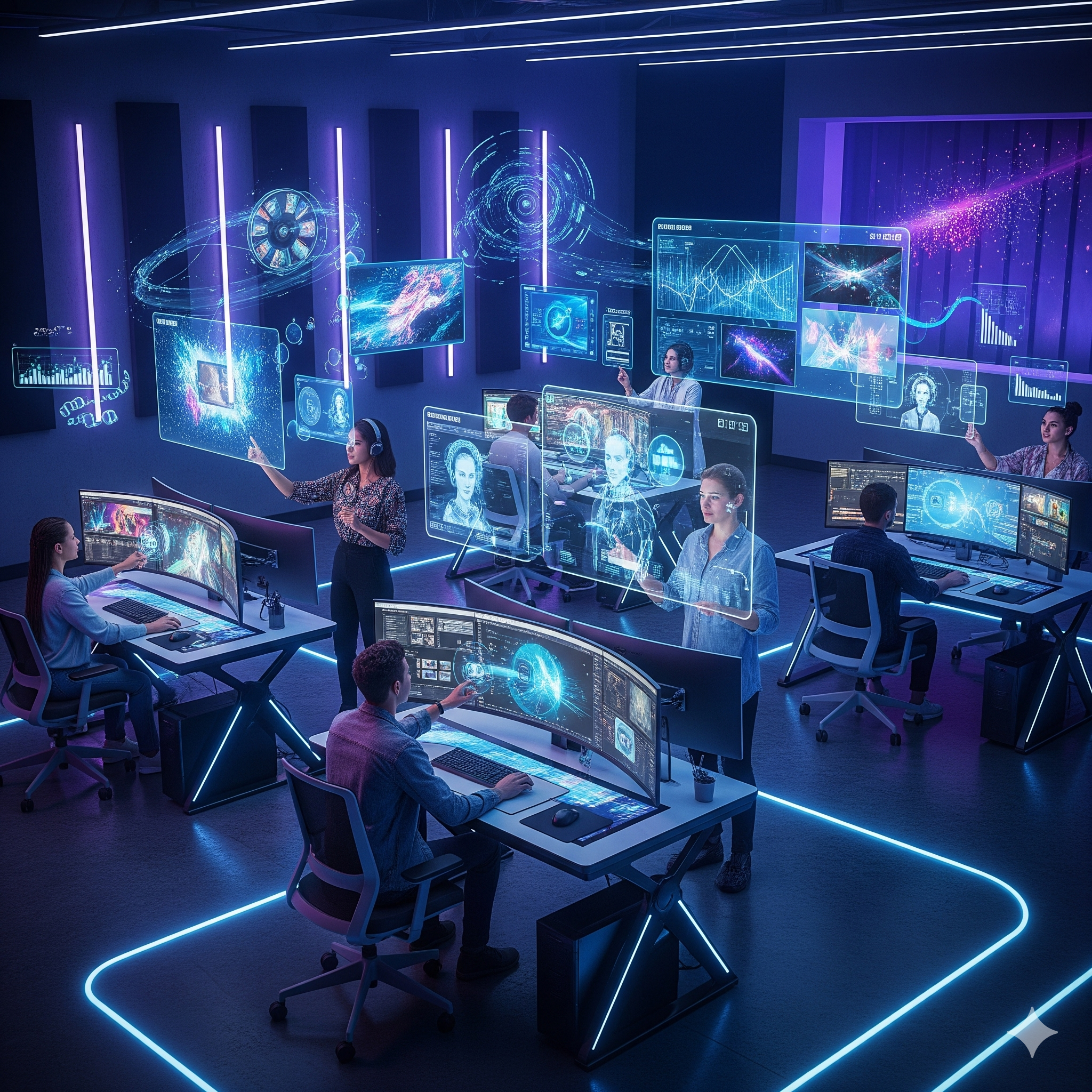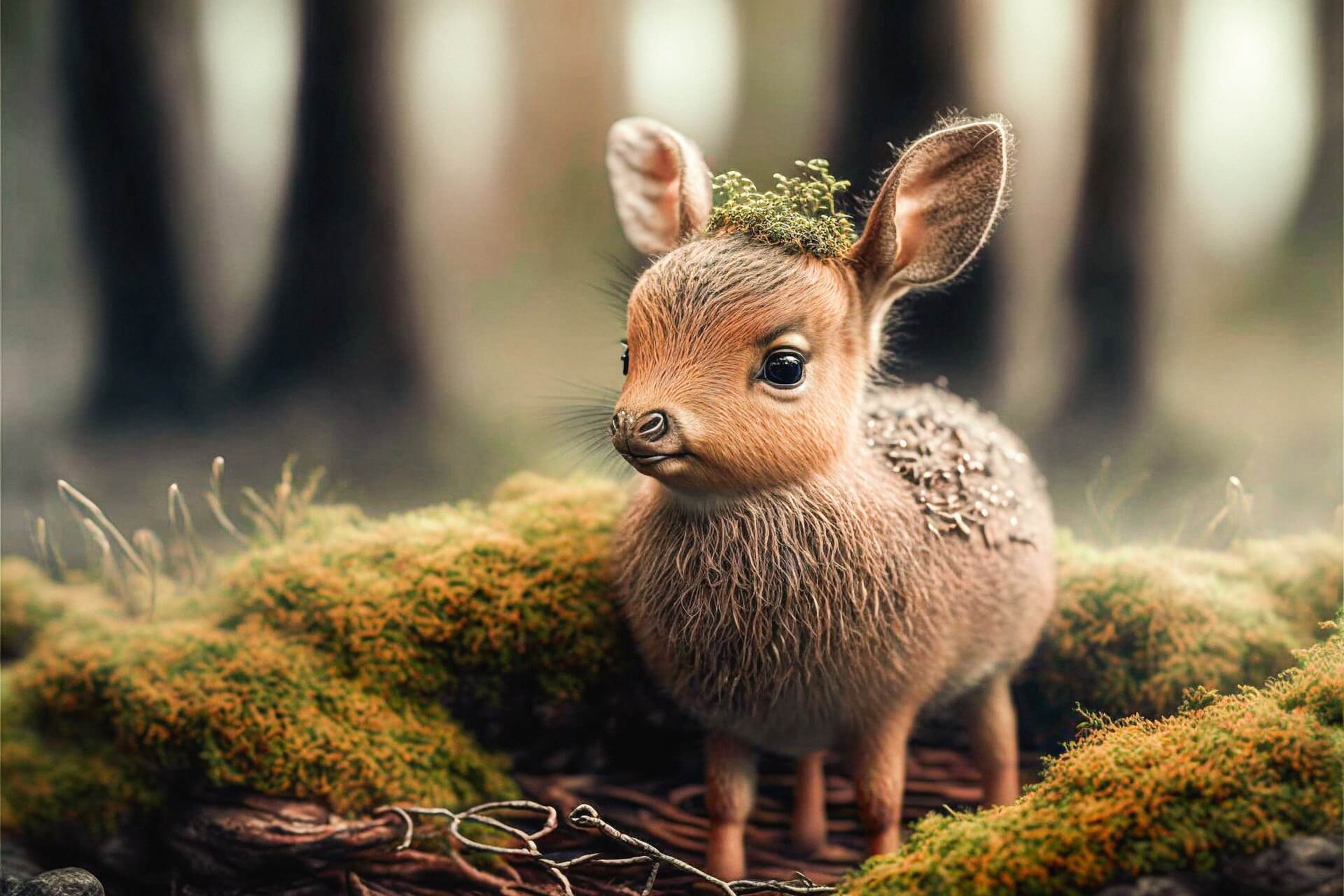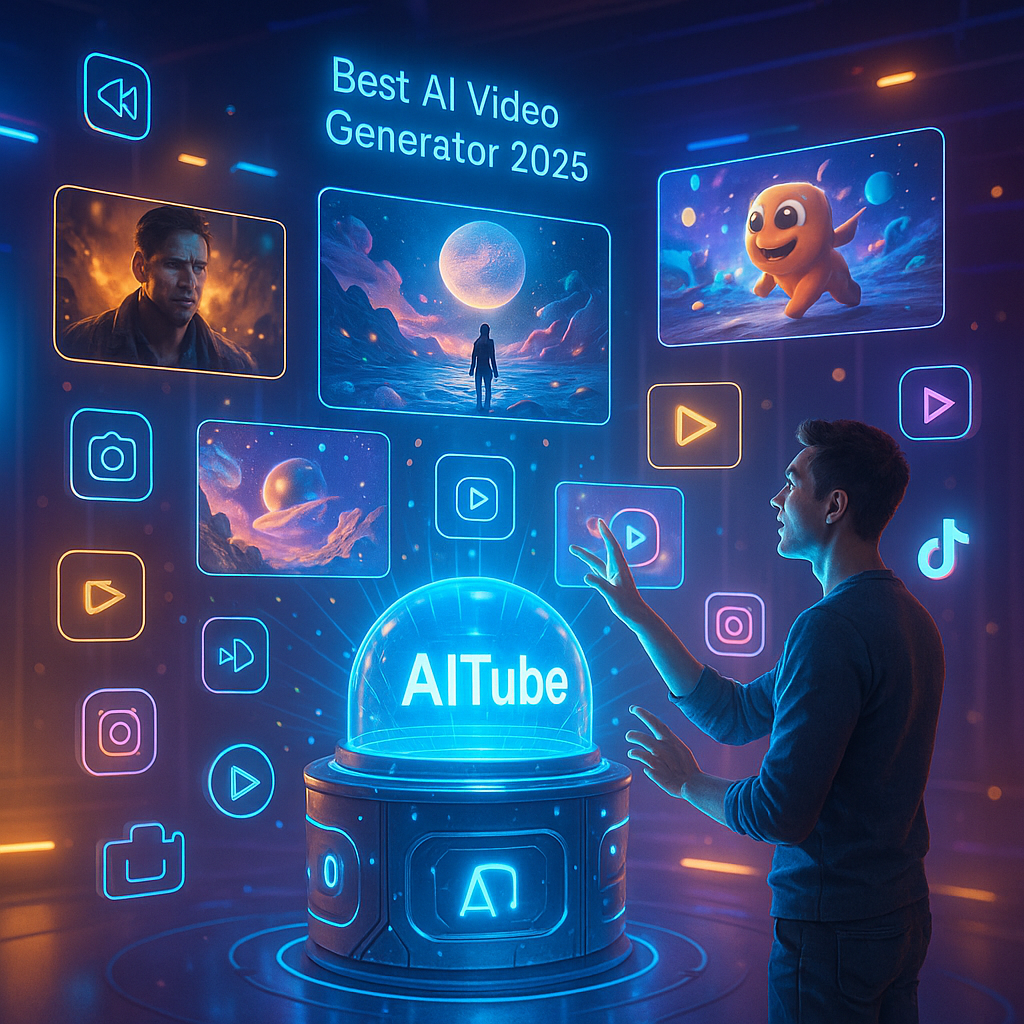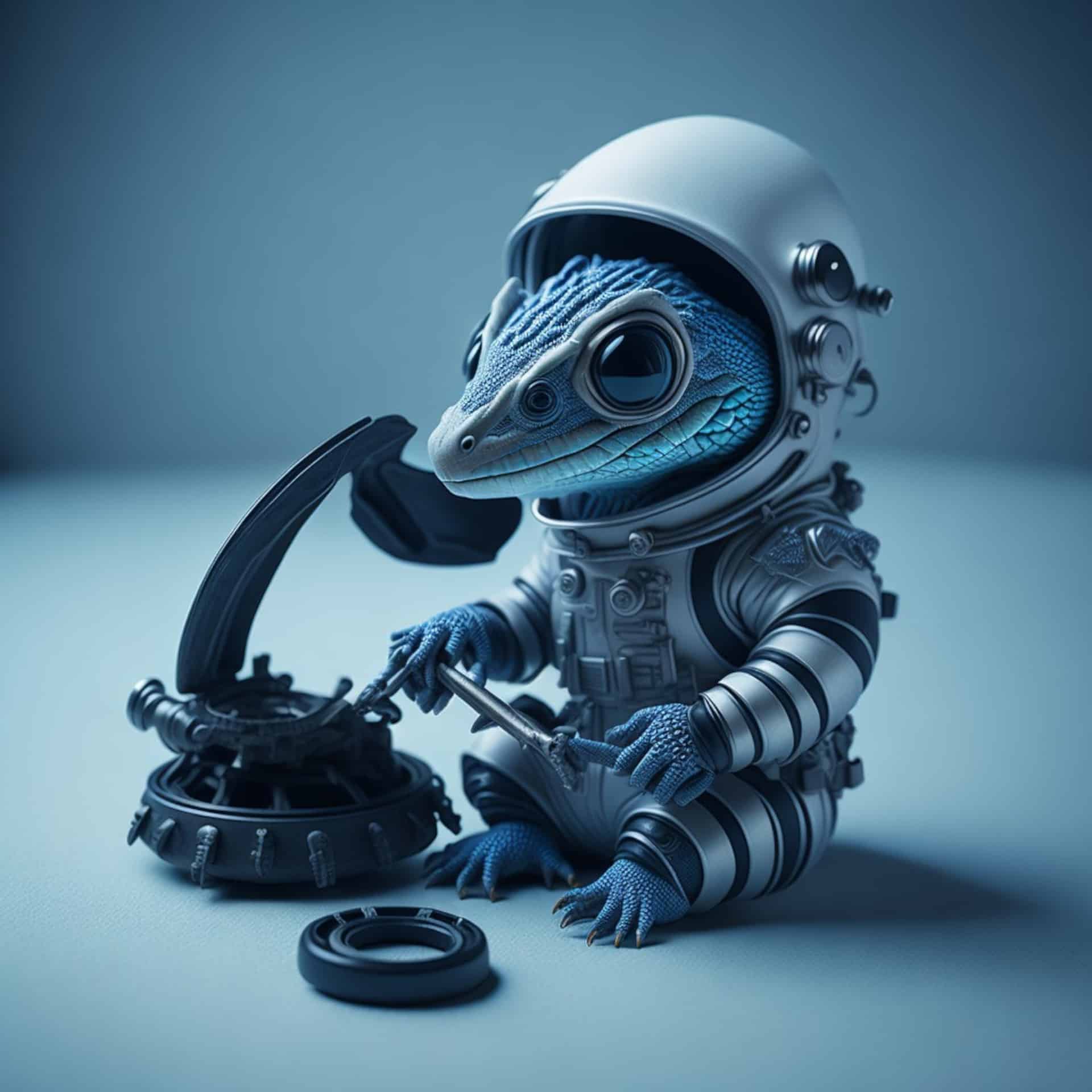The world of digital media is evolving faster than ever, and one technology stands at the forefront of this revolution — AI-generated video content. From YouTube creators and marketers to major production studios, artificial intelligence is redefining how videos are created, edited, and distributed. What once required teams of writers, editors, and designers can now be achieved within minutes using advanced AI tools.
This transformation is not just about saving time or cutting costs — it’s about creativity, personalization, and innovation at scale. Let’s explore how AI-generated video content is reshaping the future of digital media and what it means for creators, businesses, and audiences worldwide.
The Rise of AI in Video Creation
Artificial Intelligence has moved from being a futuristic concept to a practical tool that empowers everyday creators. In recent years, AI models capable of understanding visuals, speech, and emotions have become increasingly powerful. Platforms like AITube have made it possible to generate entire videos automatically — from scriptwriting to visuals and even voiceovers.
Earlier, producing a high-quality video required technical knowledge and expensive equipment. Today, AI bridges that gap by allowing anyone to create studio-quality videos without professional experience. Whether it’s a promotional clip, explainer video, or YouTube content, AI tools can generate content in minutes, reducing the need for manual editing and animation.
How AI-Generated Video Content Works
The process behind AI-generated video content is fascinating. Here’s how it generally works:
- Input Stage – The user provides basic input such as a topic, script, or text prompt.
- AI Processing – The system uses natural language processing (NLP) and computer vision to analyze and interpret the content.
- Visual Generation – AI automatically selects or generates matching visuals, animations, and graphics.
- Voice and Music Integration – Tools can create lifelike AI voiceovers and background music suited to the tone and emotion of the content.
- Final Rendering – The system compiles all elements into a ready-to-publish video in HD or even 4K quality.
This seamless process eliminates traditional editing barriers, allowing creators to focus more on ideas and storytelling rather than technical complexity.
Benefits of AI-Generated Video Content
The impact of AI-generated videos goes far beyond convenience. It offers a range of benefits that are driving massive adoption across industries.
1. Time Efficiency
Creating a professional video manually could take days — writing the script, shooting footage, editing, and finalizing it. AI reduces that time drastically, producing videos in a fraction of the time while maintaining high quality.
2. Cost Reduction
Hiring editors, actors, and production teams can be expensive. With AI tools, you can create multiple videos using automated systems that cost significantly less, making video marketing affordable for startups and small businesses.
3. Consistency and Quality
AI ensures brand consistency across all video materials by maintaining the same tone, design style, and color scheme automatically. It also eliminates human errors common in manual editing.
4. Scalability
AI-generated video content enables organizations to produce hundreds of videos simultaneously for different audiences or platforms. This is particularly useful for e-commerce, social media, and e-learning businesses.
5. Personalization
AI can tailor videos to individual viewers. By analyzing user data and behavior, it creates personalized recommendations, interactive experiences, and targeted ads that improve engagement and conversion rates.
Applications Across Industries
The versatility of AI-generated video content has made it a valuable asset across various industries.
1. Digital Marketing
Marketers are using AI-generated videos to create personalized ads, promotional clips, and social media content. AI platforms can even analyze campaign performance and adjust content strategies automatically.
2. Education and E-Learning
AI tools can create engaging educational videos, tutorials, and explainer animations. Teachers can input a topic, and AI produces a complete video lesson with narration and visuals — saving time and improving learning outcomes.
3. Entertainment and Media
Streaming platforms and YouTube creators are embracing AI to automate video production, generate storylines, and create character-driven animations. Some even use AI to revive classic footage or enhance visual effects.
4. Corporate Communication
Companies use AI-generated videos for onboarding, training, and internal communication. These videos help employees grasp complex ideas faster while maintaining a consistent corporate identity.
5. Real Estate and E-Commerce
AI creates property tours, product showcases, and promotional videos with stunning visuals — all generated from basic product data or text descriptions.
AI and Human Creativity: A Perfect Collaboration
While some fear AI might replace human creators, the reality is the opposite. AI enhances creativity rather than replacing it. Instead of spending hours editing or animating, creators can focus on storytelling, ideas, and emotional impact.
AI acts as a co-creator — handling repetitive tasks while allowing humans to guide artistic direction. This collaboration makes it possible to produce more creative and meaningful content faster than ever before.
For example, a filmmaker can use AI to generate scene previews, experiment with visual effects, or create short animations for concept testing. Similarly, marketers can instantly turn blog posts into engaging videos for multiple platforms.
The Role of AITube in Shaping the Future
Platforms like AITube are leading this AI-driven transformation. AITube allows users to generate stunning videos automatically using artificial intelligence. Whether you want to create AI-generated video content for your YouTube channel, marketing campaign, or business presentation, AITube simplifies the process from start to finish.
Its smart algorithms can understand your text prompts, select visuals, generate lifelike voiceovers, and render professional-quality videos ready for publishing. With AITube, businesses can maintain consistent branding, save hours of production time, and reach global audiences effortlessly.
Challenges and Ethical Considerations
Despite the advantages, AI-generated video content brings certain challenges that require attention.
1. Authenticity Concerns
AI can produce hyper-realistic content, making it difficult to distinguish between real and synthetic media. This raises ethical concerns about misinformation and content authenticity.
2. Copyright and Ownership
Determining ownership of AI-generated content remains a gray area in copyright law. Businesses must ensure compliance with licensing and data-use policies.
3. Job Shifts
While AI won’t replace creativity, it will shift the nature of video-related jobs. Professionals will need to adapt and learn how to work alongside AI rather than compete against it.
4. Quality Control
Although AI can generate videos quickly, human oversight is essential to ensure factual accuracy, emotional tone, and alignment with brand identity.
The Future of AI-Generated Video Content
The future of AI-generated video content is filled with promise. We are moving toward a world where video production will become as simple as typing an idea. Advanced AI models will soon generate entire video series, interactive stories, and immersive experiences using minimal input.
Moreover, with deep learning, AI will adapt to user preferences, voice tones, and emotions — making videos more relatable and human-like. Businesses that embrace this evolution early will gain a competitive edge in the digital marketplace.
In the coming years, expect AI tools to integrate seamlessly with social media platforms, enabling real-time content creation and audience interaction. From automated ad campaigns to personalized video recommendations, AI will continue to shape the way we consume and create digital media.
Conclusion
AI-generated video content is not just a technological trend — it’s a creative revolution. It empowers individuals and organizations to produce high-quality, engaging videos without the barriers of traditional production. As tools like AITube continue to evolve, the line between human creativity and artificial intelligence will blur, leading to a new era of limitless content creation.
In the future, every business, educator, and creator will have access to AI-powered tools that make video production faster, smarter, and more impactful. The digital media landscape is changing — and those who adapt today will lead tomorrow.



